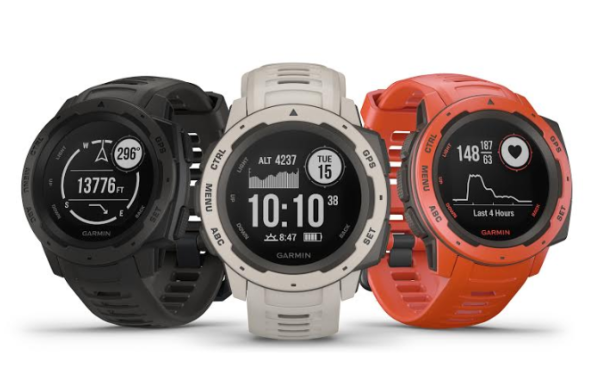Garmin Instinct GPS Watch

OLATHE, Kan. / Garmin International, Inc., a unit of Garmin Ltd. (NASDAQ: GRMN), today announced Instinct, a strong and durable GPS watch with built-in 3-axis compass and barometric altimeter plus multiple global navigation satellite systems (GPS, GLONASS and Galileo) support and wrist-based heart rate. In addition to key GPS data, ABC and heart rate sensors, Instinct includes built-in sports apps, smart connectivity and wellness data.
“We are thrilled to add Instinct to our adventure watch lineup, an approachable smartwatch that is rugged and reliable,” said Dan Bartel, Garmin vice president of global consumer sales. “Instinct is perfect for those who spend their time outdoors and demand a device built tough to stand up in the elements.”
The Instinct is a reliable tool built to endure challenging environments. The Instinct is constructed to military standards (MIL-STD-810G) for thermal, shock and water resistance (rated to 100 meters) with a fiber reinforced polymer case. It’s built with a chemically-strengthed and scratch-resistant display that’s easy-to-read, especially in direct sunlight. Plus, the fully-vented silicone bands include two independent, removable keeper loops to ensure a secure fit.
While in the field, feel confident exploring off the beaten path thanks to the Instinct, which features multiple GNSS satellite networks to help track a users location in more challenging environments than with just GPS alone. Before venturing out, use the Garmin Explore™ app to plan the trip in advance and when it’s time to head back to camp, the TracBack® feature on the watch can navigate the same route back to the original starting point. Read more






